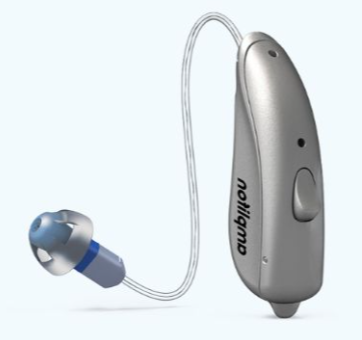Hearing aids come in a variety of styles and technologies, each designed to suit different levels of hearing loss, lifestyle preferences, and cosmetic concerns. Choosing the right type of hearing aid can make a significant difference in comfort, usability, and effectiveness. Here’s a comprehensive overview of the most common types of hearing aids and what makes each one unique.
1. Behind-the-Ear (BTE) Hearing Aids
Behind-the-ear hearing aids are among the most widely used and versatile types. They consist of a small plastic case that rests behind the ear and is connected to an earmold or earbud via a clear tube. BTE models are suitable for people with mild to profound hearing loss.
Pros:
-
Powerful amplification
-
Long battery life
-
Suitable for all ages and most hearing loss types
-
Easier to handle and clean
Cons:
-
More visible than in-ear models
-
Can be affected by wind noise
2. Receiver-in-Canal (RIC) / Receiver-in-the-Ear (RITE)
RIC or RITE hearing aids are a smaller version of BTE devices. They place the speaker or receiver directly in the ear canal, connected to the main body by a thin wire. These are popular for their discreet design and natural sound quality.
Pros:
-
Sleek and less noticeable
-
Good sound clarity with less feedback
-
Comfortable and lightweight
Cons:
-
More delicate components
-
May require more frequent maintenance
3. In-the-Ear (ITE) Hearing Aids
ITE hearing aids fit completely inside the outer ear. They are custom-made from impressions of the ear and are generally easier to insert and remove than smaller in-canal models.
Pros:
-
Larger controls and batteries
-
Good for those with dexterity issues
-
Discreet but still powerful
Cons:
-
More visible than smaller in-canal styles
-
May pick up more wind noise
4. In-the-Canal (ITC) and Completely-in-Canal (CIC) Hearing Aids
These hearing aids sit inside the ear canal and are even more discreet than ITE models. CIC hearing aids are virtually invisible, while ITC versions may be slightly larger.
Pros:
-
Highly discreet
-
Natural sound placement due to position in the ear
Cons:
-
Smaller size means smaller batteries and controls
-
May not be suitable for severe hearing loss
-
More prone to earwax and moisture issues
5. Invisible-in-Canal (IIC) Hearing Aids
IIC hearing aids are the smallest and most discreet type, fitting deep within the ear canal. They are ideal for those who prioritize invisibility and have mild to moderate hearing loss.
Pros:
-
Virtually invisible
-
Natural sound experience
Cons:
-
Not suitable for all ear shapes
-
Short battery life
-
Harder to insert and remove
Selecting the right hearing aid involves balancing functionality, comfort, appearance, and budget. Whether you need a powerful BTE model for profound hearing loss or a discreet CIC option for mild loss, there’s a hearing aid to match your lifestyle. Consulting with a hearing care professional can help guide you to the best solution, ensuring improved hearing and a better quality of life.
